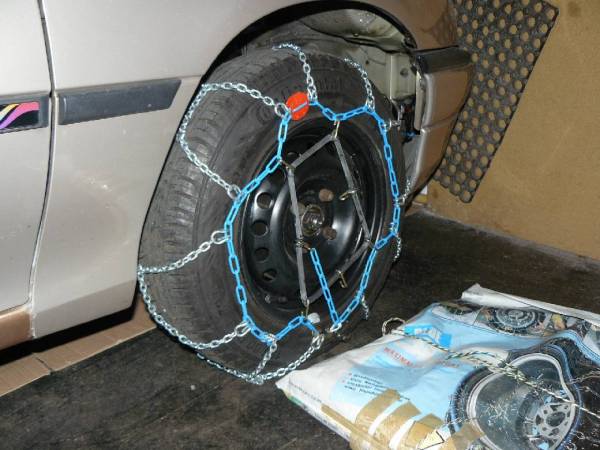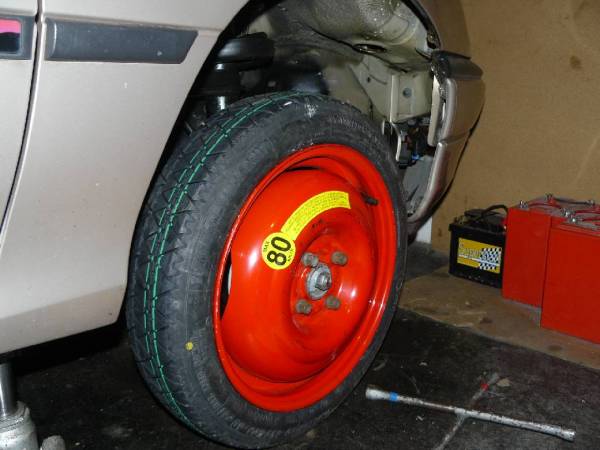Sidebar
wheels
First criterium is of course the rolling resistance - the lower it is, the fewer miles you got to push the car after the battery has gone flat.
I had to choose between two options (that were listed in the car's certificate of conformity): Either keep with the original 14“ rims, together with modern but wide “fuel saver” tyres, or switch to piddly 13” rims, that go together with old-fashioned “conventional” and narrow 155/80 R13 tyres.
After some recherche (that yielded only very little comparable figures though), I decided to go for the 13“ variant. Apparently, narrow tyres by nature have lower drag than wide ones, and it is questionable whether the modern “low drag” technology of the wider 14” tyres can compensate for this.
Furthermore, the performance of fuel saver tyres, especially on wet road, is disputed.
The narrow tyres will also ease steering and save a few kilograms of weight.
Small disadvantage: They look terrible (to drive it to the limit - here with old snow chains that accidentally fitted).
These Opel rims by the way have an unconventional offset of 46mm, while retail rims usually have 30mm. Such a difference should still be within tolerance to get road admission, but would probably affect handling, so I took care to get “original” rims from a trusted junk dealer.
I also got a compact spare wheel - don't know yet where I will store it!
Ganz in Rot naht
das Not-Rad



